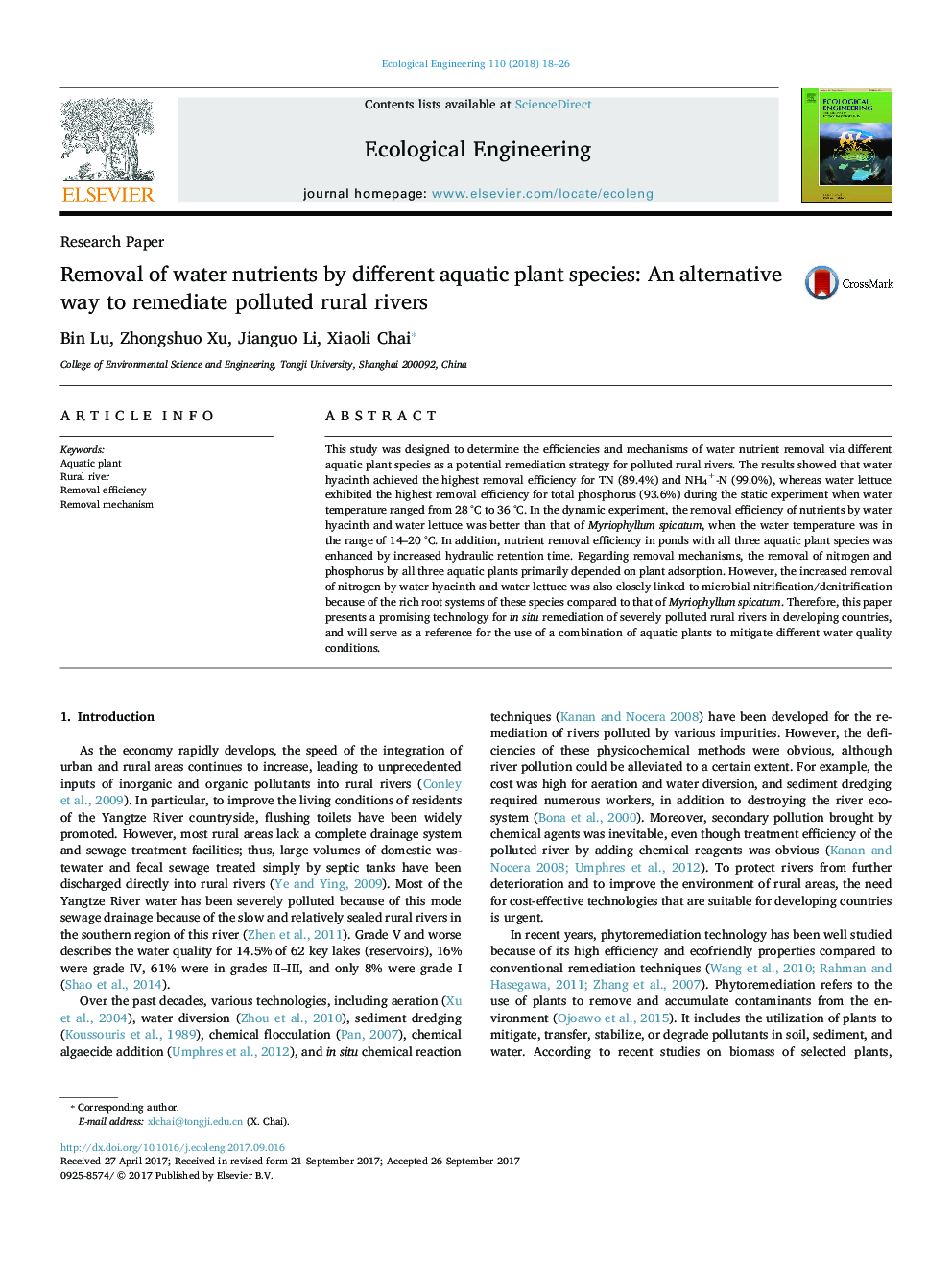| Article ID | Journal | Published Year | Pages | File Type |
|---|---|---|---|---|
| 5743500 | Ecological Engineering | 2018 | 9 Pages |
Abstract
This study was designed to determine the efficiencies and mechanisms of water nutrient removal via different aquatic plant species as a potential remediation strategy for polluted rural rivers. The results showed that water hyacinth achieved the highest removal efficiency for TN (89.4%) and NH4+-N (99.0%), whereas water lettuce exhibited the highest removal efficiency for total phosphorus (93.6%) during the static experiment when water temperature ranged from 28 °C to 36 °C. In the dynamic experiment, the removal efficiency of nutrients by water hyacinth and water lettuce was better than that of Myriophyllum spicatum, when the water temperature was in the range of 14-20 °C. In addition, nutrient removal efficiency in ponds with all three aquatic plant species was enhanced by increased hydraulic retention time. Regarding removal mechanisms, the removal of nitrogen and phosphorus by all three aquatic plants primarily depended on plant adsorption. However, the increased removal of nitrogen by water hyacinth and water lettuce was also closely linked to microbial nitrification/denitrification because of the rich root systems of these species compared to that of Myriophyllum spicatum. Therefore, this paper presents a promising technology for in situ remediation of severely polluted rural rivers in developing countries, and will serve as a reference for the use of a combination of aquatic plants to mitigate different water quality conditions.
Related Topics
Life Sciences
Agricultural and Biological Sciences
Ecology, Evolution, Behavior and Systematics
Authors
Bin Lu, Zhongshuo Xu, Jianguo Li, Xiaoli Chai,
